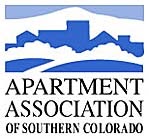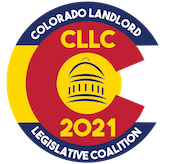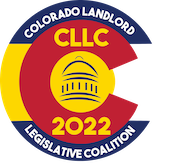MAINTENANCE AND CARE OF YOUR HOME
BEFORE SUBMITTING YOUR MAINTENANCE REQUEST, read this page in its entirety.
Do you have a property maintenance emergency? If so, please call our maintenance hotline 719-355-8688 EXT 3 and 2) submit the issue in your tenant portal.
What constitutes an emergency? In general, an emergency is anything that can cause damage to the property, or cause harm or habitability issues to residents.
- Fire: Call the Fire Department immediately.
- Gas Leak: If you suspect a gas leak in your home, evacuate the house and call 911 immediately. Then call your gas company.
- Loss of Heat: This is an emergency if the outside temperature is falling below 40 degrees. Before submitting an emergency maintenance request, complete these troubleshooting steps first.
- Loss of Hot Water: If your home is equipped with a gas water heater, check to determine if the pilot light (flame) is lit. If it is not lit, call your gas company (such as CSU) and they will come out to light the pilot light at no charge. If this does not remedy the issue, report a maintenance emergency to Alliance.
- Water Intrusion/Flood/Pipe Broken: Turn off main water valve immediately and call us.
- No Electricity: If only portions of the house are without power - this is NOT an emergency. First, check all GFI outlets to determine if they have been tripped; they may be located in any area of the house, garage, bathrooms, kitchen or outside outlets. If we send someone to fix an electrical outage and find it was just a tripped GFI, you will be responsible for the bill. Second, check the breaker box to see if the main breaker needs to be reset. Flip the main breaker to the OFF position and then back to the ON position. Third, if the main breaker is fine, check with a neighbor and call your local utility company to see if there is a widespread outage.
- Locked Out: Call a locksmith. This is the tenant responsibility to pay for. We recommend A Mobile Locksmith (719) 264-0788
If this is NOT an emergency, we require maintenance requests to be in writing, via your tenant portal. Before submitting the request, we ask that you complete some basic troubleshooting on the most common issues. (see below)
Upon submission of your maintenance request, you will receive a reply (generally within one business day) from someone on our team explaining the next steps. If a vendor is sent a work order for the repair request, that vendor will contact you directly to schedule the appointment. When you schedule your time with our vendors, please hold your originally scheduled appointment or call them to reschedule with a minimum of 24 - hours notice. If you miss your appointment, you will be responsible for the "no show" fee.
SUBMIT REQUESTCOMMON MAINTENANCE ISSUES
-
My furnace is not working
Check the thermostat. Does it have/need batteries? Is it programmed correctly?
Check the panel on the furnace (usually located on the front where you install the filter). Take the panel off and put it back on securely. Sometimes it can vibrate off and cause the furnace to stop working.
Flip the toggle switch/light switch on and off (all units have an on/off switch).
Is the pilot light lit?
Check the furnace filter? Is it dirty? A dirty filter can cause the furnace to stop functioning.
If these steps do not resolve the issue, submit a maintenance request
Garbage disposal is not working
When your garbage disposal is not working, the cause is either something stuck in the blades of the disposal preventing it from not spinning or the motor has burned out. If we send a vendor to unclog the disposal, you will be charged for this service. Watch this video and follow the steps to unclog it. If this does not resolve the issue, submit a maintenance request.
If you see the housing on the disposal is cracked or leaking water, then it will need to be replaced. There is nothing you can do to remedy this problem.
My toilet is clogged
Try to unclog it using a plunger. If this does not resolve the issue, submit a maintenance request.
Some of the outlets don't work
If only portions of the house are without power - this is NOT an emergency. Check all GFI outlets to determine if they have been tripped; they may be located in any area of the house, garage, bathrooms, kitchen or outside outlets. If we send someone to fix an electrical outage and find it was just a tripped GFI, you will be responsible for the bill.
Check the breaker box to see if the main breaker needs to be reset. Flip the main breaker to the OFF position and then back to the ON position. If the main breaker is fine, check with a neighbor and call your local utility company to see if there is a widespread outage.
If these steps do not resolve the issue, submit a maintenance request.
Garage door is not closing
This could be an issue with the sensor. Watch this video and complete these troubleshooting steps. If this does not resolve the issue, submit a maintenance request.
Smoke alarms beeping
Change the batteries.
Read this article for other troubleshooting tips.
If this does not resolve the issue, submit a maintenance request.
Gas fireplace won't turn on
Watch this video and follow these steps.
1) Open the Fireplace Grill/Panel
Raise or lower the cover on the bottom of the fireplace to gain access. Most units have an ignition button inside the fireplace unit. If you do not have an ignition button, you will light the log with matches and then turn the key valve on your fireplace once you have lit the pilot light.
2) Turning on Pilot Light and Gas Line.
•Locate the gas line inside the fireplace unit. Turn the valve so that it runs parallel to the gas line. (If it’s turned in the perpendicular position then the gas line is off.)
• Locate the control knob. The control knob will have the words "On," "Off" and "Pilot" on it. If the knob is not in the "off" position, turn the knob to "Off." Wait for a few minutes before continuing to light the pilot light.
• Light the pilot light. Turn the knob to "Pilot". Press down the control knob. Continue to press the control knob while depressing the ignition switch one time every second. Stop pressing the ignition switch when the pilot lights. Keep pressing the control knob for 30 seconds. Gradually disengage the control knob. Repeat the process after a few minutes if the pilot light does not ignite. It might take a few minutes for the gas to enter the fireplace if it has been off for some time.
• Turn the control knob to "On" when you have a sustained pilot light. Move away quickly from the fireplace so you won't get burned. Some fireplaces have an ignition button. Flip the ignition button to "On." If you don't have an ignition button, light the gas logs by holding a long match near the log. Turn on the key valve to bring in gas. The height of the flame will depend on how much gas you let in with the key valve.
3) Turn on the Fireplace.
• Most units have a switch on the wall. Other units have a hidden switch inside the unit. Make sure either switch is on after pilot light has been lit.
If this does not resolve the issue, submit a maintenance request.
SUBMIT REQUESTPROPERTY CARE AND MAINTENANCE
FLOODING/WATER LEAK
How to Shut Off Main Water Line
Check your tenant portal for a photo of the main water valve. In the event of a flood, know how to turn off the main water line. Typically, the main water line is located in the utility room/closet, near the water heater. The valve is typically located within 3 to 5 feet of where the water main enters the home. If you don't find it on the front wall, check for a mechanical room, or near the water heater or furnace. In a crawl space or with slab construction, the shutoff valve may be right inside the crawl space.

How to Shut Off Other Water Valves
When minor plumbing problems strike, you don’t need to shut off the water to the whole house – simply turn the valve behind the appliance or fixture that’s giving you trouble. The primary water shut off valves you should know about are located:
- Behind the washing machine: If the washer hose starts leaking or the appliance overflows, limit water damage by pulling the unit away from the wall and turning the shut off valve behind it clockwise.
- By the toilet: If your toilet is overflowing or leaking - stop the flow of water by turning the shut off valve (located on the wall behind the toilet) clockwise.
- Under the sink: Twist the water shut off valve under the sink clockwise.
CHANGING THE FURNACE FILTER
It is the tenant’s responsibly to change the filter either once a month or once every three months - depending on the quality of the furnace filter. Dirty filters damage the furnace and central air conditioning systems and may cause either to fail. Repairs caused by a dirty filter will be charged to the tenant.
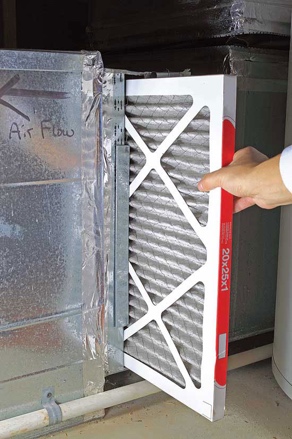

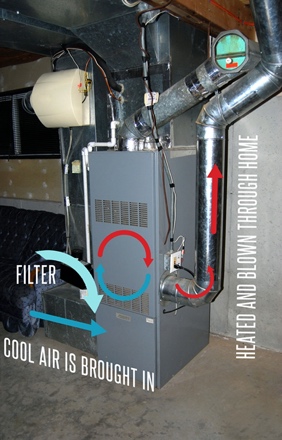
PLUMBING - WIPES CLOG PIPES!
We've seen an increase in plumbing issues a result of wipes getting flushed in the toilet. While wipes may be easy to use, they don't belong in the toilet. Flushable wipes can lead to blockages & cause serious damage. They don't decompose like toilet paper and can lead to major back-ups in your pipes. These repair costs will be passed along to the tenant. In general, only toilet paper and human waste belongs in the toilet.
Do NOT flush:
- Wipes of any kind, including flushable wipes
- Make-up removal wipes
- Diapers – cloth, disposable, flushable
- Paper towels
- Facial tissues
- Q-tips
- Cotton balls or cotton pads
- Dental floss
- Sanitary napkins, tampons, condoms or any non-organic material
- Baby wipes, disinfectant wipes, moist wipes, etc.
- Toilet bowl scrub pads
- Swiffer mop pads
- Napkins – paper or cloth, paper towels
GARBAGE DISPOSAL
DO NOT put these items in the garbage disposal. These items belong in the trash.
- Potato peels…end up wedged in the drain and clog.
- Bones…too hard
- Veggies...carrots, celery, pumpkin, and other fibrous veggies. Stringy fibers can get wrapped up in blades and jam
- Egg shells...the hard outer layer of the shell is ground into a sand-like consistency that sticks to pipe walls and contributes to clogs, and the shell’s stringy membrane layer wraps around the disposal’s shredder ring.
- Coffee grounds...they reduce into a dense, thickly packed pasty wad and clog drains
- Onion Skins…the layer is so thin that it can pass through the disposal, missing the blades and wind up wedged in the drain, where it acts like a cargo net on a pickup, catching more items and holding them in place
- Oil, grease and fat
- Oatmeal…absorbs water, swells and clogs
- Nuts…gets caught in gear mechanism; makes “peanut butter” in drains.
- Trash
- Seeds and pits… get caught in gear mechanism.
- Corn Husks… binds up gear mechanism.
- Shells…any shell from nuts or seafood is too hard and clogs up the drain.
- Pasta…absorbs water, swells and clog
FREEZING TEMPERATURES – how to protect the home
- Do not ever turn off the furnace during the winter months, Sept-May
- All residents are strongly encouraged to take the following steps to avoid frozen pipes - and to avoid hefty repair costs that you could be liable for.
- Remove garden hoses from any and all exterior spigots. (if applicable)
- TURN OFF the automatic sprinkler system. (if applicable)
- Be sure that any and all exterior spigots are completely turned off.
- KEEP HEAT ON, SET TO AT LEAST 60 degrees. All of the interior pipe freezes are 100% avoidable by tenants turning the heat on.
- Open all cupboards enclosing plumbing. This allows warm air to easily flow around pipes. Consider insulating pipes.
- Flush any infrequently used toilets in the home.
- IF YOUR UNIT WILL BE OR IS VACANT, even for a short time, take all of these precautions before you leave and designate someone with a key and the responsibility to check on the unit for frozen pipes




